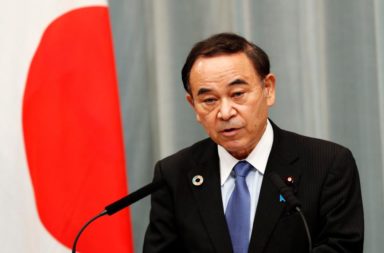South Korea has announced $A56 billion plans to build the world’s largest offshore wind farm, an 8.2-gigawatt project off the coast of Sinan in the Yellow Sea, as the government puts flesh on the bones of its 2020 pledge to go carbon neutral by 2050.
South Korea has few energy resources of its own and relies on imported coal — a cheap but dirty fuel — for around 40 per cent of its electricity. President Moon Jae-in declared the carbon neutrality goal last year but at the same time is looking to phase out nuclear power, leaving the country depending on renewables to square the circle.
The project follows closely on the October 2020 unveiling of South Korea’s Green New Deal, a pledge to invest billions in renewable energy and electric vehicles, phase out coal by 2030, put a price on carbon and put a complete stop to coal financing of any kind. “With this project, we are accelerating the eco-friendly energy transition and moving more vigorously toward carbon neutrality,” Moon said at the wind farm ceremony on Friday. Offshore wind, in general, is expected to be a big part of the government’s plans, with Moon previously declaring his intention to make South Korea “one of the world’s top five offshore wind energy powerhouses by 2030.”
South Korea already submitted a carbon neutrality strategy to the United Nations, in which it outlines its plans to decarbonize the country’s energy, agriculture, and transportation sectors. A further expansion of solar and wind energy is central to the plan of the government, as reflected now with the wind energy plant announcement. Renewables now make up just 4% of the country’s electricity mix.
The agreement involves 33 different entities, among them regional governments, the electricity generator KEPCO, and major private firms including Doosan Heavy Industries & Construction and SK E&S. Moon warned it could take more than five years to start construction, although the government will try to accelerate the process. Seoul last year announced a target of becoming one of the world’s top five offshore wind energy powerhouses by 2030. South Korea also plans to cut its existing nuclear power plants – currently the country’s only significant low-carbon energy source – from 24 to 17 by 2034, reducing the sector’s energy output by nearly half.





